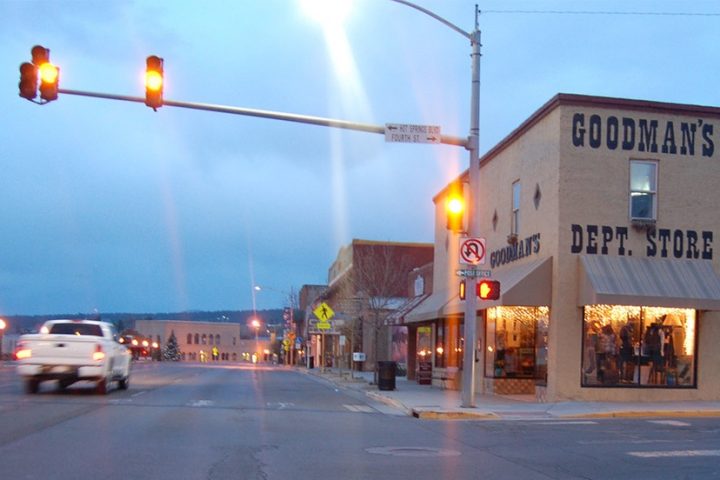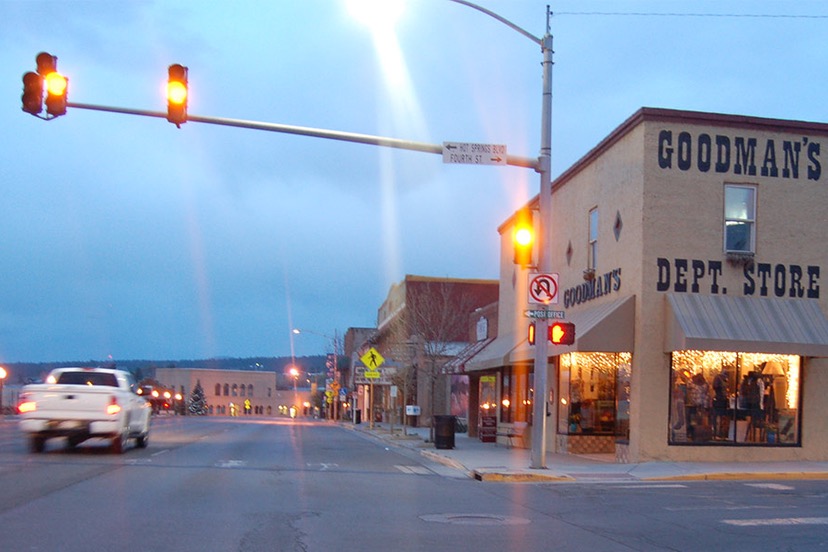Some people see Pagosa’s parking problem primarily in terms of “numbers”.
For example:
How many parking places will be occupied by people visiting a 2,000-square-foot brewery, compared with the number of parking spaces occupied by people visiting a 2,000-square-foot Forest Service office? How many minutes will a person, visiting either of those establishments, remain parked in the same spot?
Those kinds of numbers.
How many feet is a resident or tourist willing to walk, from their vehicle to a certain place of business? Does it matter whether the certain place of business is a brewery or a Forest Service office?
If we, as taxpayers, were to fund a parking garage somewhere, how many dollars would be required?
On a scale of 1-10, how disappointed will we be if no one makes use the expensive new tax-funded parking garage?
Some numbers related to parking were generated, over the past few weeks, by the Town of Pagosa Springs Planning Department. The department posted a “survey”, open to anyone and everyone, on the website MyPagosa.org. The numbers were reviewed last night at the Town Planning Commission meeting.
146 People completed the survey; 46 People started the survey but did not complete it. (In a community of 14,000 people, that’s a “completion” response rate of 1%.)
One of the key questions facing the Town Planning Department is, “Should we continue to require commercial developments, in the downtown, to create on-site parking lots, big enough to accommodate their employees and customers — or should the Town create public parking lots that can be used by all, and thereby encourage more dense, more pedestrian-friendly commercial development along our downtown streets?”
The Town Planning Commission has (somewhat timidly?) indicated a preference for the second option: public parking lots.
How much would these public parking lots cost us?
That question has been asked, regularly, for the past 15 years or more, but no answer has yet been provided. But if we did know how much a public parking lot was going to cost, who should pay for it? Should we charge new downtown development for the full cost? Should the community’s taxpayers, as a whole, foot the bill?
The Parking Survey respondents were divided on the question:
The current cost of a paved public parking space depends on many factors… One option to pay for new public parking is requiring developments to pay a fee for a portion of, or all of the cost to accommodate the off-site parking required to service the development. One option to pay for new public parking is requiring developments to pay a fee for a portion of, or all of the cost to accommodate the off-site parking required to service the development. Is a parking impact fee appropriate for Pagosa Springs in the Downtown area?
 89 respondents picked “Yes”. 63 respondents picked “No” or “Unsure”.
89 respondents picked “Yes”. 63 respondents picked “No” or “Unsure”.
How many of these respondents were developers, who might end up paying this fee? In fact, who were the respondents?
Unfortunately, the survey did not ask:
1) Do you live in Pagosa Springs?
2) If you live in Pagosa Springs, how long have you lived here?
3) Do you work, or own a business, in downtown Pagosa Springs?
4) How often do you visit Pagosa’s downtown, and attempt to find parking?
4) Have you ever abandoned a trip to the downtown commercial district because you failed to find a parking spot?
4) Do you purposely avoid downtown Pagosa due to parking issues?
6) Are you willing to increase your own tax burden to pay for parking solutions? Or do you want someone else to pay for the improvements?
A casual observer might wonder if Town Planning Department failed to collect truly useful information with their survey.
Although the best things in life are free, when a government (like, say, the Town government) wants to do something to benefit the taxpayers, it usually costs money. Usually, if it’s something new (like, say, a public parking facility) the money has to come from new taxes or fees, or else must be diverted from some other service the Town has been providing.
As Pagosa’s uptown commercial district built out over the past 30 years, the Town government required all of the major businesses to build massive parking lots, which created a rather ‘unfriendly’ environment, highly dependent upon automobiles, and generally adverse to pedestrians and bicycles.
Maybe we want something different downtown — maybe, something similar to what we already have. A place where people feel safe walking, or riding bikes. A downtown commercial district clustered along Highway 160, where — from what I can tell — people feel reasonably safe walking from one business to the next. Window shopping, eating a frozen yogurt, perhaps carrying an inexpensive ‘antique’ from one of our numerous second-hand stores.
Can we keep it?

During the impeachment hearings in Washington DC in December 2019, members of the House of Representatives were inordinately fond of sharing a certain historical quotation from Benjamim Franklin. As the story was repeated on the House floor, Franklin was walking out of Independence Hall after the Constitutional Convention in 1787, when someone shouted out, “Doctor, what have we got? A republic or a monarchy?”
To which Franklin supposedly replied, with a rejoinder both witty and ominous: “A republic, if you can keep it.”
A bit of research reveals that the exchange probably took place, not outside Independence Hall, but rather in the home of Elizabeth Willing Powel, wife of Philadelphia Mayor Samuel Powel. As related in an 1803 essay by James McHenry, a Maryland delegate to the Constitutional Convention, Powel immediately shot back, “And why not keep it?”
Franklin responded, “Because the people, on tasting the dish, are always disposed to eat more of it than does them good.”
Not that Pagosa is dealing with the creation of a new republican form of government, or with overeating, per se, but we do currently have a semi-walkable downtown. Can we keep it?
What might the cost be?

